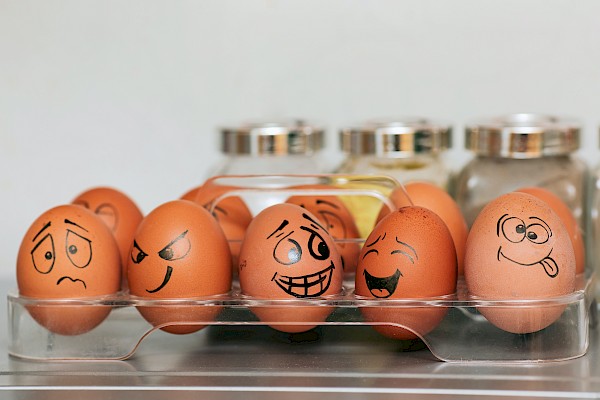Green companions
Do you have any houseplants? Or is your office at work or study at home decorated with plants? If not, it’s definitely worth thinking about changing this. Why? It’s quite simple: green companions have many positive effects. Read more to find out what they are.
Plants and health
We have already turned the spotlight on the effects of nature on our minds and bodies in previous blog articles. In places like meadows, parks, forests and even bodies of water, the natural environment acts to promote and protect health. Stress-reducing, attention-focusing, concentration-boosting, blood-pressure-lowering and relaxing properties are ascribed to them. Do read our blog post “Enjoy some fresh air!”, if you like. In particular, being in the forest seems to do us good. Did you know that time spent in the forest demonstrably strengthens your immune system? Your body produces more killer cells when you spend time in forests. A study showed that the number of killer cells in the blood rises by almost 40% in people who have spent time in the woods. This effect lasts for a week, and researchers attribute it to the botanical aromatic substances emitted by the trees, which in this instance are known as terpenoids – the substances trees use to communicate between themselves. The terpenoids emitted by conifer trees, such as spruce, firs or pines, are especially effective. Animal experiments have even established that taking in terpenoids can slow the formation of tumours. Therefore it is clear as day that it is a good idea to visit a forest whenever you can. If you’re interested, our blog post on Shinrin-Yoku will tell you more about the effects of the forest and “forest bathing”.
“The forest is one of the best places for recharging your batteries.”
− Ernst Ferstl −
In any case, nature and her many plants are extremely good for us. But what about indoor plants? Can you just bring a piece of nature home or into the office and benefit from it?
Houseplants and plants in the workplace
Many of us use houseplants first and foremost as decoration. A pot plant beside the sofa looks pretty, and so does a small plant on the windowsill or desk. A green companion can, however, do a lot more than just look good.
Studies have primarily been conducted in company offices, but the outcomes can also apply to your workspace at home, if that is where you work.
Just like plants that grow outside, pot plants can improve air quality. They reduce the amount of CO2 and other pollutants in the air. They also affect atmospheric humidity, which means we get less tired and can concentrate better. Ventilating the room well will also result in high air quality. Plants in the workplace, then, lead to increased concentration at work. When you can concentrate better on your work, you will automatically be more productive and perform better. This has also been demonstrated in studies. The performance of the study subjects increased by 15% in rooms containing greenery. Other research has shown that staff sick days and absences are reduced if the offices contain houseplants. This effect has also been demonstrated in schoolchildren. Likewise, people are less likely to suffer from complaints like coughs, fatigue, headaches, sore throats, nose pain or eye pain. Effects on psychological factors are reflected in contentment, mood, stress levels and how people generally are. Contentment grows, mood improves, people often feel better and stress levels decrease when there are houseplants around. Saliva tests have confirmed that tension (stress) really can be reduced in this way. Taking care of the plants yourself has been proved to boost the stress-reducing effect. All these changes (contentment etc.) give an additional positive boost to employee performance.
A therapeutic potential is also ascribed to houseplants and flowers. After an operation, patients recover better if their ward is decorated with flowers and plants. They don’t need to be hospitalised for as long, require fewer painkillers and their vital signs (e.g., pulse, blood pressure, respiratory rate) are better. What’s more, their state of mind is also better, and their attitude towards their hospital stay is more positive. The extent to which plants can be used in therapeutic settings, and with what additional effects, is being investigated.
Most of us spend approximately 80 to 90 percent of our time indoors. Therefore it is all the more important that our surroundings are healthy, so we can make sure that we are doing something positive for our bodies and minds. House plants are a little bit of nature that you can bring inside.
Do you not have any plants at home, but would now like to get some? We recommend the following easy-to-care-for plants:
- Succulents
- Sansevierias
- Zamioculcas
- Dragon tree
- Tillandsias
- Devil’s ivy
- Fiddle-leaf fig
- Elephant’s foot
You can find more information and tips about these plants here.
Have fun with your new green colleagues and companions!
References:
Adamson, K., & Thatcher, A. (2018). Do indoor plants improve performance outcomes?: using the attention restoration theory. In Congress of the International Ergonomics Association (S. 591-604). Springer.
Ali Khan, M., Amin, N., Khan, A., Imtiaz, M., Khan, F., Ahmad, I., Ali, A., & Islam, B. (2016). Plant therapy: a nonpharmacological and noninvasive treatment approach medically beneficial to the wellbeing of hospital patients. Gesunde Pflanzen, 68(4), 191-200.
Bringslimark, T., Hartig, T., & Patil, G. G. (2007). Psychological benefits of indoor plants in workplaces: Putting experimental results into context. HortScience, 42(3), 581-587.
Burchett, M., Torpy, F., Brennan, J., & Craig, A. (2010). Greening the Great Indoors for Human Health and Wellbeing. Final Report to Horticulture Australia Ltd.
Fitzgerald, C. J., & Danner, K. M. (2012). Evolution in the office: How evolutionary psychology can increase employee health, happiness, and productivity. Evolutionary Psychology, 10(5), 770-781. https://doi.org/10.1177/147470491201000502
GEO. (2019). Wie Bäume unser Immunsystem stärken. https://www.geo.de/natur/oekologie/21200-rtkl-heilsame-duftstoffe-wie-baeume-unser-immunsystem-staerken
Gielas, A. (2019, April). Lasst Pflanzen um mich sein! Psychologie Heute. https://www.psychologie-heute.de/gesundheit/artikel-detailansicht/39859-lasst-pflanzen-um-mich-sein.html
Han, K. T., & Ruan, L. W. (2019). Effects of indoor plants on self-reported perceptions: a systemic review. Sustainability, 11(16), 1-26. https://doi.org/10.3390/su11164506
Moya, T. A., van den Dobbelsteen, A., Ottelé, M., & Bluyssen, P. M. (2019). A review of green systems within the indoor environment. Indoor and Built Environment, 28(3), 298–309. https://doi.org/10.1177/1420326X18783042
University of Exeter. (2014, 1 September). Why plants in the office make us more productive. ScienceDaily. https://www.sciencedaily.com/releases/2014/09/140901090735.htm
 subscribe to newsletter
subscribe to newsletter


